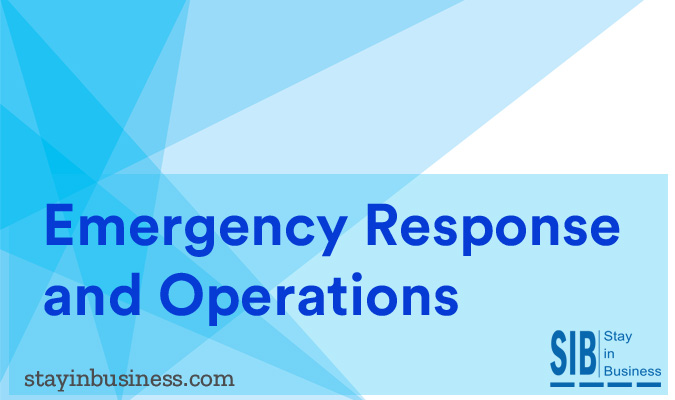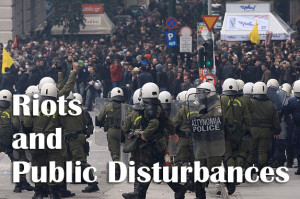 During a disaster situation the BCDR plan is leveraged with its incorporated necessary actions that are to be taken to recover as soon as possible. Updating the key stake holders during and after the situation is one of the critical steps in Business Continuity and Disaster Recovery along with all other measures. As a matter of fact, having a sound BCDR plan in place even before a business is struck by any disaster will definitely be a key strategy in overcoming it.
During a disaster situation the BCDR plan is leveraged with its incorporated necessary actions that are to be taken to recover as soon as possible. Updating the key stake holders during and after the situation is one of the critical steps in Business Continuity and Disaster Recovery along with all other measures. As a matter of fact, having a sound BCDR plan in place even before a business is struck by any disaster will definitely be a key strategy in overcoming it.
World has come across many natural disasters such as Tornadoes, Tsunamis, Earthquakes, Floods, Hurricanes, Thunderstorms, winter storms, Wildfires, Volcanoes and man-made catastrophes such as Chemical spills, bomb threats, terrorism and fires etc. All the natural disasters take place without any prior notice and so intelligence always lies in being prepared to face them with all the potential that we have in order to minimize the damage going to be caused. Stay in Business BCDR plans will help the businesses rectify their existing plans and even guide them in right path.
Firstly, before developing an Emergency Response and Operations plan all the above discussed hazards such as natural and deliberate incidents should be considered.
Emergency Response Plan:
In case of an emergency, the measures taken in the initial minutes always count.
- Initial step would be to call 911 and inform.
- Employees should be warned promptly to evacuate or to take a shelter when there is a lock down.
- The dispatcher at the public emergency services can send the right responders and equipment that can provide complete information and help when there is a call.
- Life saving act takes a trained employee who can administer the first aid and perform a CPR.
- The personnel holding complete knowledge on the whereabouts of the whole premises and its systems can help control a leak if any and also minimize further damage to the facility.
Developing Emergency Response Plan:
- Before developing an Emergency Response Plan it is always necessary to conduct a risk assessment in order to identify the potential emergency scenarios.
- Examine what information are ready for incident stabilization.
- The Emergency Plan should be developed in such a way that it always needs to be consistent with the existing scenarios along with its performance objectives.
- Every facility of an organization must develop an Emergency Response Plan (ERP) and implement it when needed in order to protect its employees and its visitors as well.
- Some of the public emergency services such as fire departments might be able to provide any kind of rescue and even emergency medical services as needed that are appropriate to that situation.
- Reach out to local laws enforcement to manage planning for security related threats.
- Safety drills must be followed, therefore making it easy for all the personnel to be able to react promptly at the time of emergency.
- Each and every person in an organization must be trained to get familiar with all the warning alarm systems, emergency communications and protection systems as well.
- Emergency Plans must be reviewed with all the staff in order to ensure individuals role and responsibilities to be carried out at an emergency.
- The safety drills help the entity in identifying the gaps or deficiencies if any in the plan and provide an opportunity to rectify them.
- The availability of the resources and their capabilities must be assessed earlier in order to stabilize the current disastrous situation.
- Entities must be in contact with the public emergency services to be able to determine their response time to the actual facility when needed.
- ERP must include all the safety steps to be taken in order to overcome a disaster.
Information security and other loss prevention programs must be in place. - Key personnel list must be updated and maintained.
Off-duty emergency telephone numbers must be maintained.
The highest priority is given to save the lives of the employees when there is a major disaster. Once life safety is assured then comes the part of business continuity and disaster recovery through stabilizing the situation hence minimizing the potential damage.
Emergency Operations:
- Building evacuation should be ordered in case of a fire accident or bomb threat and must be relocated to safety.
- A generator must be in place in case of power outage.
- An alternative shelter or building location must be in place while evacuating the existing building.
Emergency lock down procedures must be followed in case of any violence. - Shelter must be provided in case of airborne hazard such as tornadoes and chemical releases.
- First aid and CPR provided by trained employees is considered one of the life saving measures.
- Injured persons must be provided with best medical services.
- General fires can be extinguished through the fire extinguishers provided at the facility by any trained personnel.
- Small chemical spills and supervision of building utilities and systems under sway can minimize the damage to the facility, therefore preventing the environmental damage.
- Damage can be lessened through the severe weather forecast hours earlier they come, providing valuable time period to protect a facility.
- Moving away from the exterior glass of the building premises in case of a tornado broad cast can save the staff from major injuries.
- Emergency lockdown must be in place when there is an act of violence. Therefore all the staff must be warned to hide themselves in a safe place.
Emergencies do not wait for anybody to come and be taken care of, so necessary immediate actions must be taken by the trained staff and higher authorities until the emergency services team arrives to the spot. Even if you choose to call for help before doing something on your own, having an emergency Response and Operations plan in place can help you get through the disaster situation with emergency notification procedures.
It is aware that people and their property are perpetually vulnerable to several events that endanger their safety. Hence they need a proper Business Continuity and Disaster Recovery (BCDR) plan that gives out the Emergency Response and Operations plan. Stay in Business has been providing the best BCDR plans for several years regardless of the size of an entity, therefore helping the enterprise owners to remain in the market and strengthen their position further.
See for yourself how the application works
Witness our cloud based platform’s security capabilities in action
Play around with the software and explore its features
Compare and choose a solution that’s relevant to your organization
Consult our experts and decide on a pricing mechanism








